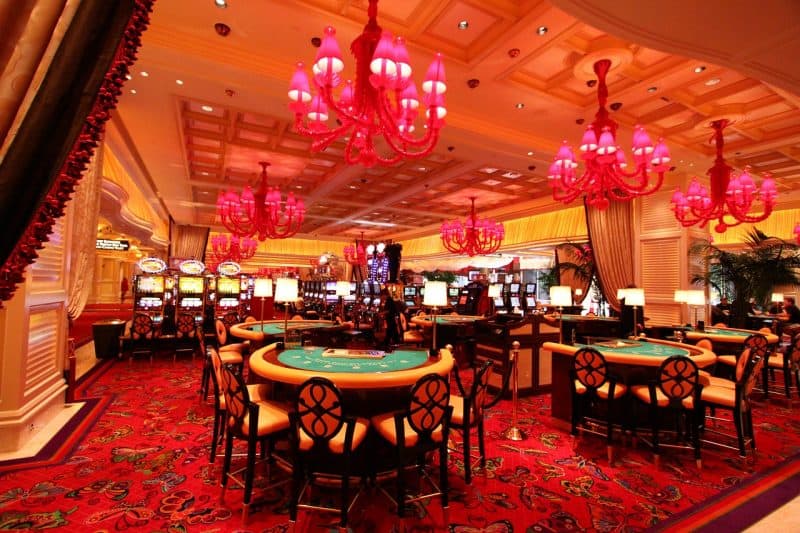The Fascinating History of Slot Machines
The history of fruit machines is a captivating journey that parallels the development of entertainment and wagering throughout the years. From their humble origins in the 1890s to becoming a fixture in gambling establishments throughout the world, these games of chance have gone through notable changes. Slot machines have mesmerized players with their colorful designs, engaging storylines, and the hope of transformative wins.
At first created as mechanical machines with turning reels and limited symbols, slot machines have evolved into cutting-edge digital games that incorporate modern tech and dynamic features. Today, they attract millions of players, each wanting to strike it lucky with just the lever pull of a handle or the tap of a tap. Delving into the intriguing past of these games reveals not just the narrative of a well-liked hobby, but also a mirror of social evolution and progress in technology over the ages.
One of the Beginnings of Slot Machines
The story of slot machines begins in the final years of the 19th century, a time when mechanical devices were becoming popular in places of amusement. The first true slot machine came into existence by Charles Fey in 1895, referred to as the Liberty Bell. This machine featured three spinning reels and 5 symbols: hearts, diamonds, spades, a horseshoe, and the famous Liberty Bell. Players would pull a lever to spin the reels, and if the symbols matched in a specific combination, players won a payout. Fey's invention rapidly captured the attention of gamblers and set the foundation for future developments in casino slots games.
As the idea of the slot machine gained popularity, numerous inventors looked to enhance Fey's design. By the dawn of the 1900s, slot machines were becoming a common sight in saloons and amusement parks. In 1907, the first electromechanical slot machine was introduced by Herbert Mills, which featured a more intricate system of payout mechanisms and the renowned fruit symbols that are still linked to slots today. This evolution marked a major shift in the gaming industry, as machines became more entertaining and user-friendly, attracting more players.
The popularity of slot machines continued to soar throughout the first half of the 20th century, resulting in their extensive use in casinos across the United States. However, as legal restrictions on gambling during the Great Depression posed challenges for the industry. Many machines were banned, but this did not stop innovators. Instead, they adjusted by creating machines that dispensed candy or gum instead of cash prizes, effectively circumventing the restrictions while still providing the thrill of a casino slots game. This ingenuity kept the spirit of gambling intact, setting the stage for the eventual resurgence of slot machines in modern casinos.
Evolution of Casino Slot Innovation
The history of slot machines started in the final 19th century with the creation of the first mechanical slot machines. A mechanic named Charles Fey, a San Francisco engineer, introduced the first slot machine in 1895, which included three revolving reels and five symbols: heart shapes, diamond shapes, spades, a lucky horseshoe, and the bell symbol itself. This straightforward yet captivating appearance laid the foundation for the evolution of casino slots game, creating an instant appeal for players searching for fun and a opportunity to gain.
As innovation progressed, so did the design and functionality of gambling devices. By the middle 20th hundred years, electronic mechanical machines appeared, adding electronic elements to boost gameplay and boost payout opportunities. These improvements enabled for greater complexity features like several paylines and greater jackpots. The gambling venues embraced these advances, leading to the rise of gambling devices as a major source of revenue within the casino business, essentially transforming the slots gaming experience.

The closing 20th and beginning 21st eras heralded the digital revolution, leading to the debut of digital slots. These machines changed out traditional reels with digital screens, enabling even more imagination in themes and gameplay mechanics. Gamblers could now appreciate rich graphics and sound effects, along with involving bonus rounds. The move to online casinos further changed the slots experience, allowing slots reachable to a global population anytime and wherever, thus marking a new era in the progression of slot machine advancements.
A Cultural Impact of Gaming Machines
These gaming machines have become more than just a form of entertainment; they have integrated into the fabric of mainstream culture. From movies and TV series to music and literature, these famous gaming machines often act as emblems of chance and risk. Films like The Casino and Ocean's 11 prominently feature slots, portraying them as exciting yet uncertain elements of the casino atmosphere. fb88.productions Their unique attraction lies in the sound of coins falling, the revolving reels, and the bright blinking lights, which together create an electric atmosphere that draws people in.
In addition, slot machines have influenced social gatherings and events, making them a focal point in casinos and gaming venues. Many people do not just visit a casino to gamble; they go for the full experience, which encompasses the social interactions and the lively ambiance surrounding these machines. Special contests and themed gaming nights centered around slots also showcase their popularity, fostering community engagement and collective fun among players. This social element has contributed to the machines' enduring popularity.
The advancement of technology has further transformed this cultural impact. Digital and online slots have broadened access to these games far beyond the walls of physical casinos. Players can now enjoy their favorite casino slot games from home or on the move, leading to the rise of online communities and discussion boards where enthusiasts share strategies and experiences. The continuous innovation in game design and the integration of storytelling have kept the cultural significance of slot machines alive, attracting new generations of players while maintaining a tie to their cultural roots.
